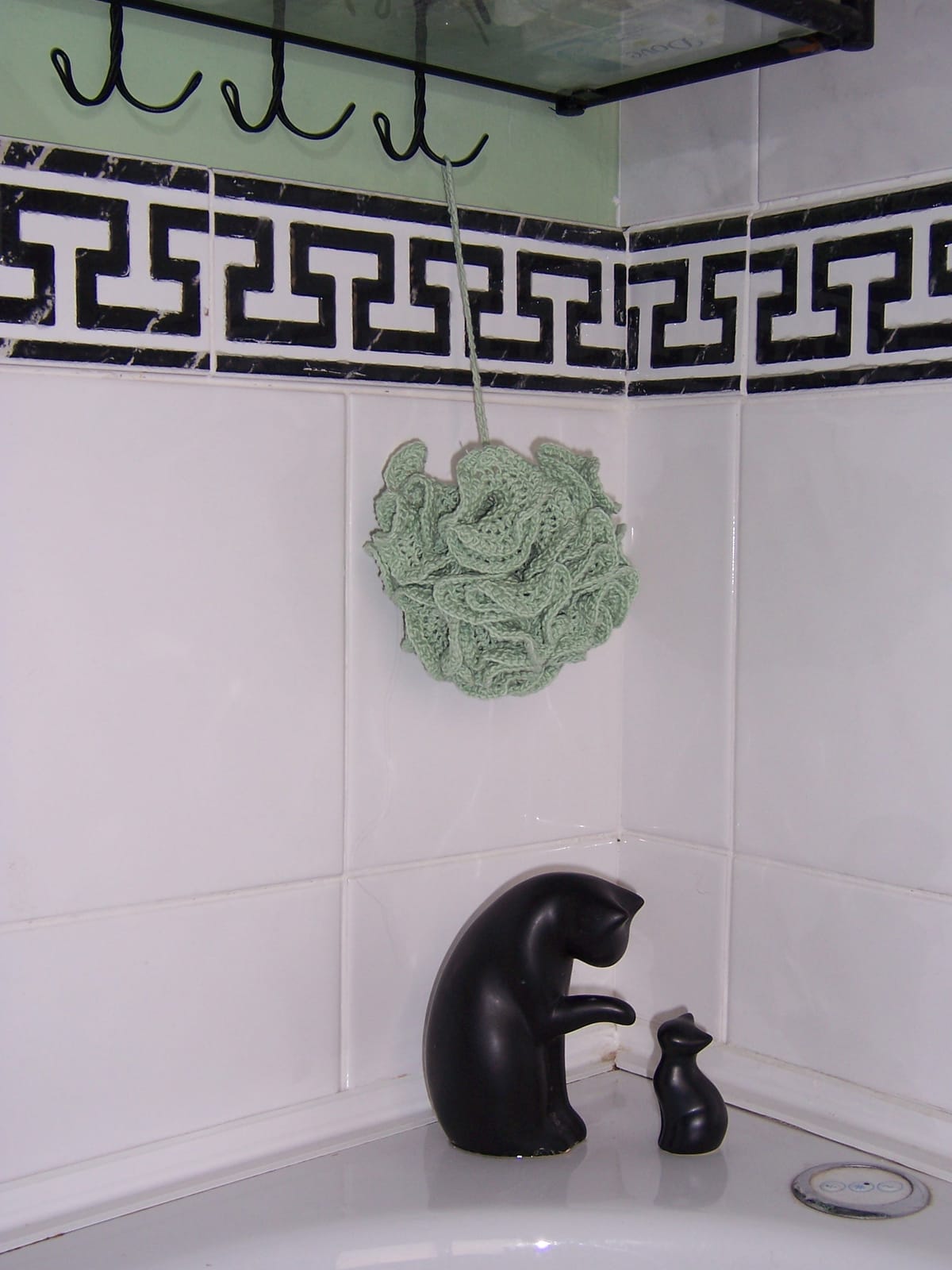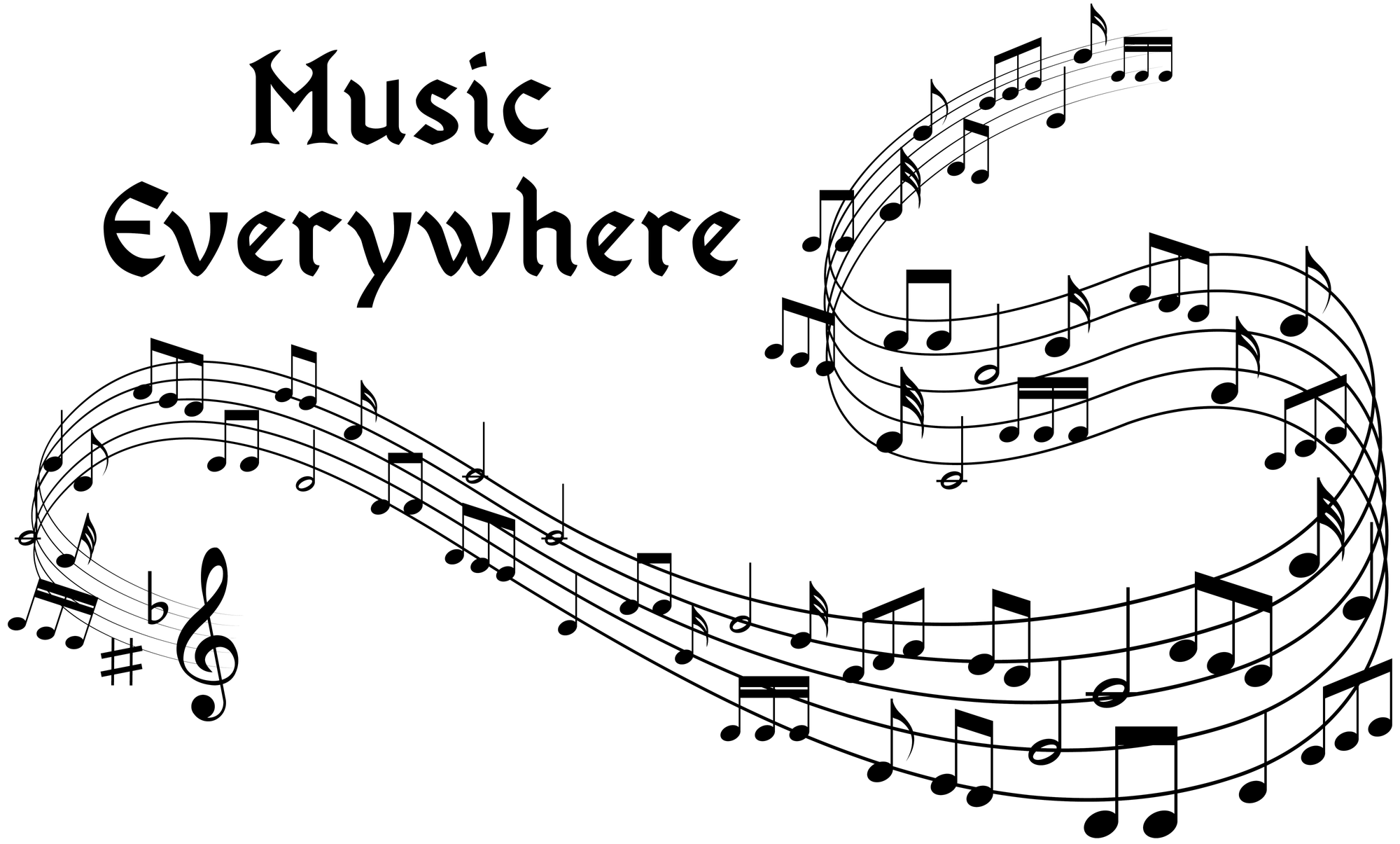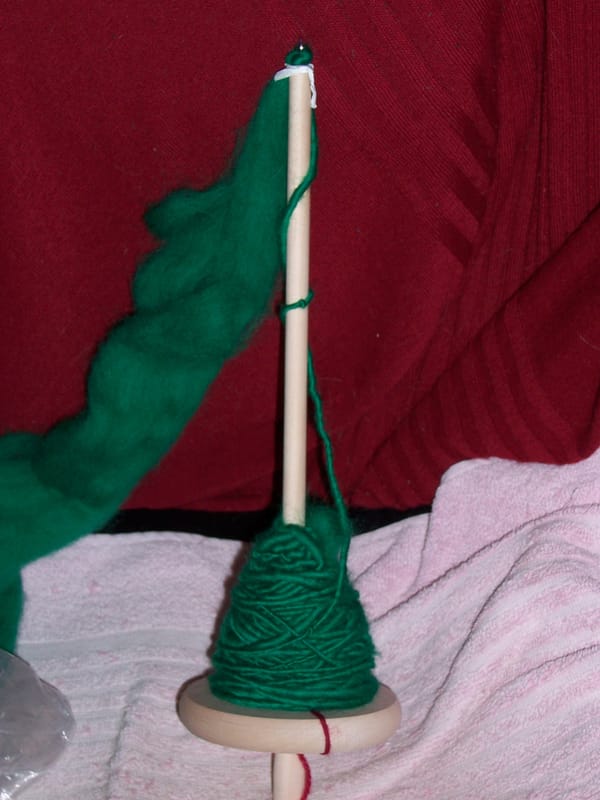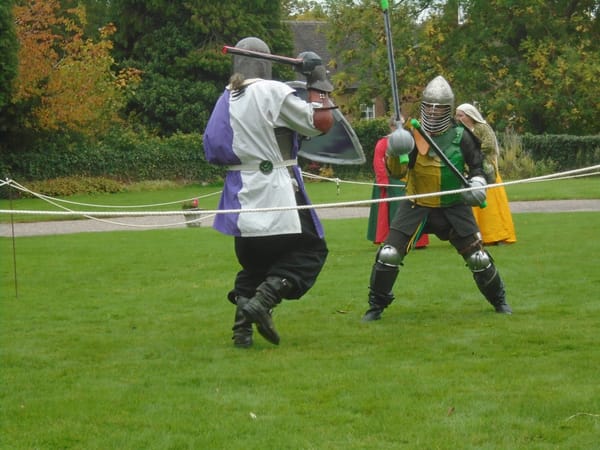Hooked on maths

It was Alex Bellos who started it all off. I can't remember which of his books it was now, because of course I no longer have it (this is becoming an habitual refrain); but he happened to mention hyperbolic crochet and I was immediately intrigued. Here's some more of it from Scientific American, with a little more of the mathematical background (but no equations, I promise).
Hyperbolic geometry refers to the geometry of what are known as negatively curved surfaces; it's also sometimes referred to as Lobachevskian geometry, after the Russian mathematician Nikolai Ivanovich Lobachevsky, who did a great deal of work on it. (For those of you who know the song by Tom Lehrer... yes, Lobachevsky was a real mathematician, and no, he didn't plagiarise any more than anyone else did! I think Lehrer simply couldn't resist the rhythm of his name.) A negatively curved surface is like a saddle, whereas a positively curved surface is like a sphere; the geometry of positively curved surfaces is generally known as spherical or Riemannian geometry, after the German mathematician Bernhard Riemann (who, among his many other achievements, also laid the foundations for Einstein's theory of relativity). And, of course, the Euclidean geometry we were all taught at school is the geometry of a plane.
Euclid was undoubtedly a genius. He started with five postulates which he considered to be so basic that they were self-evident, and carefully and thoroughly built up an entire geometry from there... but even Euclid himself was clearly somewhat hesitant about his fifth postulate, generally referred to as the "parallel postulate", since he invoked it only when he really had to do so. His geometry was such a magnificent achievement that it took around two thousand years for people to start to realise that it was not the only geometry possible. You could build entirely self-consistent geometries if you replaced the parallel postulate with something different; however, these geometries would not represent the situation on a plane, but on a curved surface.
Hyperbolic geometry was actually discovered first, but I'm going to talk about Riemannian, or spherical, geometry first because it's a little easier to grasp intuitively. We are more used to dealing with spheres than with saddles. It turns out that, in mathematical terms, the sensible way to define a "line" on a sphere is what on the earth is known as a "great circle" - in other words, a circumference which divides the sphere into two equal halves, like the equator or the lines of longitude. (We will not quibble here about the fact that the earth is not a perfect sphere; the geometry is essentially the same.) Smaller circumferences, like the Arctic or Antarctic Circle, are considered to be curved. Hence, on a sphere, all lines are parallel, and yet any pair of them you like to choose meets at precisely two points on opposite sides of the sphere; so Euclid's parallel postulate clearly does not apply here. Also, imagine that you are standing at the North Pole and you draw a line straight down the Greenwich meridian to the equator. Now draw another line at right angles to that, again stopping at the equator. Finally, connect the two endpoints along the equator. You have a triangle; it is made up from lines, not curves; and yet it has three right angles! And this, indeed, is one of the defining features of spherical geometry. The angles in any triangle add up to more than 180 degrees.
Hyperbolic geometry is a little harder both to describe and to grasp, but I'll have a go. Imagine a saddle surface and draw a line on it. Now draw a point, not on the line, anywhere else on the surface. You will find that there are at least two different lines passing through that point that never intersect the original line (and therefore, by extension, an infinite number, since these two lines will make some angle, and any line in the angle between them will also not intersect the first line). Most of them just don't intersect; at the extreme edges of this angle it gets more interesting, because you will get a line that approaches the original line asymptotically but never quite meets it. Also, if you draw a triangle on this surface, you will find that the angles always add up to less than 180 degrees.
But how do you make a hyperbolic surface, given that every point on it is a saddle point?
Well, as Mr Bellos suggested, you get out your crochet hook.
The trick is simply to increase the same amount constantly, whether that's every stitch, or every two stitches, or three stitches, or whatever. You start with a short chain loop as you would if you were making a granny square, and you keep going round; you can do it in formal rows, or, as I did, in a spiral. I think I increased every stitch, so the edge got very long very quickly. (Which crochet stitch you use, again, doesn't matter a great deal; I used double crochet.) And within just a few rows, you've got an excellent and very mathematical bath scrunchie. In fact I made two. I sent the other one to Mr Bellos, care of his publisher, to thank him for inspiring me.
But it isn't just plane surfaces that can be either flat or curved in one of two ways. So, it turns out, can space itself, and the answers to many major astronomical questions are tied in with the precise way in which space, as a whole, is (or is not) curved. (I'm not referring here to the known fact that massive bodies curve the space around them, as demonstrated by the theory of relativity and proved by the existence of gravitational lensing effects; I mean, space, in general, all of it.) And I'd very much like to be able to show you that, but I don't think even Alex Bellos knows how to crochet a curved space rather than a curved surface.
If I ever find out, I'm absolutely going to do it. Watch this... space!




